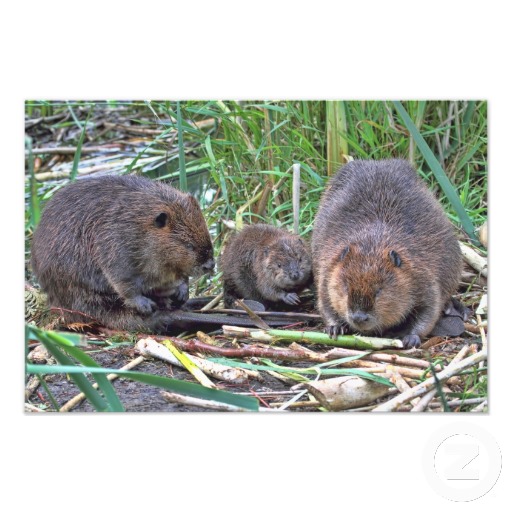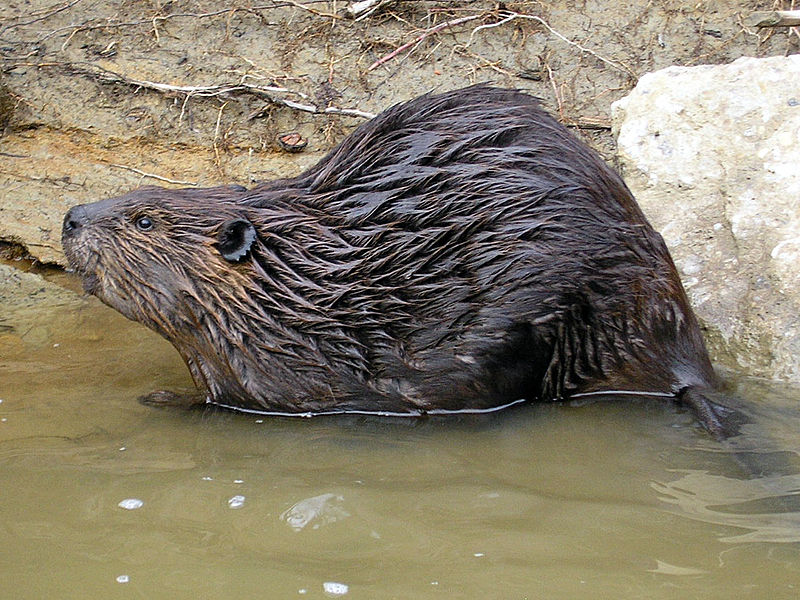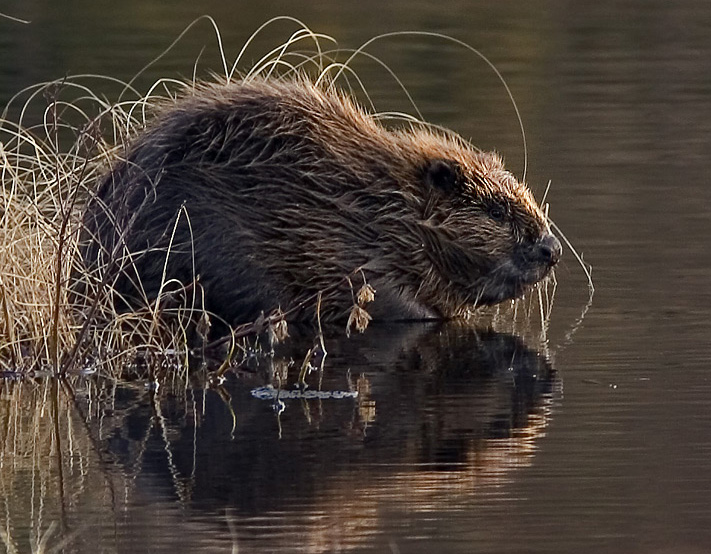
Redish Contented Big Beaver

Beaver Family
THE BEAVER.
THE beaver is about two feet in length, and is short in stature. Its body is thick and heavy. Its eyes are small, oblique, and wide apart. Its ears are also small. Its fur is remarkably close and soft, but is interspersed with longer bristly hair, which gets more abundant as the animal grows older. The tail, however, is the most peculiar part of the beaver. It is very large, nearly half as long as the body, oval in shape, and flattened on the upper and under sides. It is, also, with the exception of a small portion of the base, not covered with fur like the rest of the animal, but with a sort of horny scales which are produced by a thick, dusky skin.
Beavers are common to the north temperate latitudes, both of Europe and America; but are very rare in the middle latitudes, and are unknown in the south, even in Europe. Within a very recent period, beavers were abundant in all that country which constitutes the northern, middle, and western States of the United States. The gradual clearing up and cultivation of the country has, however, banished them, mile after mile, and day after day, from the haunts of intrusive and encroaching man, until they will, it is probable, erelong become extinct. Beavers generally choose the site of their settlements on running streams which do not afford a sufficient depth of water to be secure against freezing in winter. They begin to build, generally, in the latter part of August, although they sometimes fell their timber earlier in the summer. The trees that they fell are often five or six inches in diameter. Perhaps you wonder how they do this. It is done by means of their sharp fore-teeth. While gnawing, they sit much like a dog. They eat much of the bark and wood, which they gnaw off.
In fact, the food of the beaver consists of the bark of the aspen, willow, birch, poplar, and alder. While the more able-bodied beavers are cutting down trees, and arranging them to form their dwellings, others bring earth in their mouths with which they fill the openings between the timbers. When a portion is placed as they wish it, they turn about and give it a slap with their tails, similar to that given on the surface of the water preparatory to diving.
Beavers are easily domesticated, and become very tame. We have heard it said that they are very fond of play. We give a little incident which we read not long since: Two boys who live in the State of Iowa once concluded to see what beavers did on moonlight nights. Therefore they crept through the snow just about midnight, and went to the home of the beavers. At the dam, which the beavers had built, the moon was reflected from the ice with a great glare. To their surprise the boys saw the beavers coasting down a long slide from the top of the dam to the ice below. It was fine sport; but just then one of the boys sneezed, when the beavers disappeared like a flash.
How wonderful is this world, and the creatures it contains!
J. C. NICHOLS.

Trees for Food And Shelter
Beaver
Wednesday, Oct. 1, 1873. I spent nearly all day in writing. Willie went out upon the water in the afternoon. My husband and Willie and Sister Hall went after a load of hay to keep the horses. Their feed is nearly done.
Thursday, Oct. 2, 1873. I took my writings out under a tree and wrote, until noon. After dinner we went in a boat across the lake and scrambled over rocks and mountains, trees, and brush one mile or more. We saw large poplar trees that the beavers had taken off as nicely as though they had been cut with a knife. The instincts and habits of these animals are truly wonderful. We took the boat again. As it was hard rowing, Willie ran along on the sandy beach and with a long rope drew the boat after him, which was a much easier as well as a more rapid way of getting along, for the boat was clumsy and the oars were very poor. We spent some time upon the water. . . . There is now only one man at the lake besides ourselves."
3MR 168
Beaverlodge

Canadensis Beaver

European Beaver